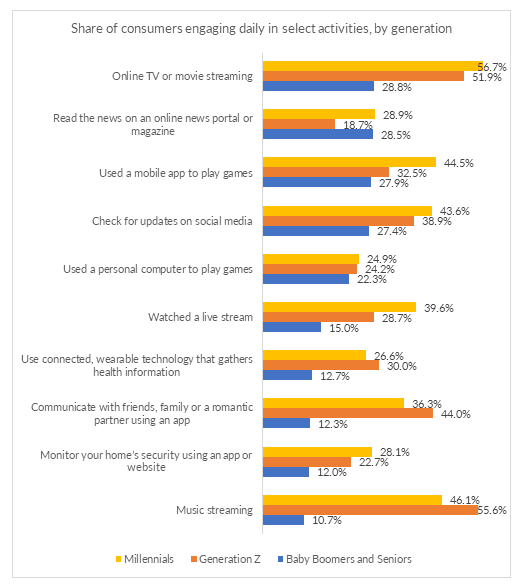
Gen Z are a difficult group to predict. They love picking up their restaurant meals, both inside and curbside. They are most open to new ways to pay, but lag behind other age cohorts in everyday digital activities such as ordering those meals online. They are digital natives but are leading the “dumb phone” trend.
Given this select uptake of digital innovations, it may be notable that it is Gen Z who far outpaces other age demographics when it comes to using healthcare-related wearables. This is most recently indicated in proprietary data prepared for PYMNTS’ March “ConnectedEconomy™ Monthly Report.”

Data shows that 30% of surveyed Gen Z respondents use wearable technology that gathers health information on a daily basis. Millennials aren’t far behind, at 27%.
With health-tracking wearable and app use growing by 21% between November 2021 and November 2022 alone, this wearable “revolution” is getting into gear. Critically, their focus on wellness means health-related wearables aren’t merely digital status symbols. For example, Apple kicked off 2023 with a series of new offerings for its Fitness+ service, including a new kickboxing workout and theme called “Sleep” to its meditation library. For Apple, this may be part of a greater move by the tech giant from being hardware-centric to a services model, offering bundled subscriptions and content. This multipronged opportunity for Apple in this transition may include increased advertising sales, subscription conversions and enhanced customer loyalty as consumers presumably return for more content.
Google, too, is more seriously getting into the wearable wellness space since its acquisition of Fitbit. Google accounts connected to the fitness wearable come with benefits such as a single login for Fitbit and other Google services, as well as more Fitbit user privacy controls. Users, however, will have to consent to transfer their Fitbit user data to Google.
The three most popular wearable manufacturers — Apple, Google and Samsung — have also introduced features tracking heart health and blood pressure. These innovations are part of a greater trend toward remote patient monitoring (RPM), with Best Buy becoming a major player in the space. The electronics retail giant in recent years has acquired both an RPM startup and care-at-home tech platform. In an even greater signal of the company’s move into the lucrative healthcare space, in 2022 Best Buy received FDA clearance to sell over-the-counter hearing aids without a prescription.
Gen Z is leading the charge towards daily use of health-related wearables, but the market is gaining popularity across age demographics as new tech offerings demonstrate these products’ capabilities. As more consumers prioritize wellness, daily wearables may be priming up for its mainstream moment.